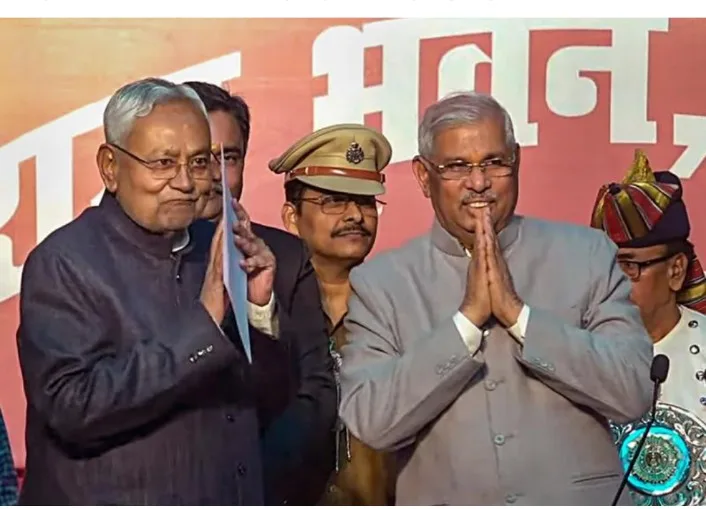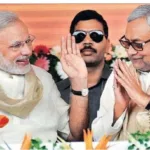Janata Dal (United) Chief Nitish Kumar Becomes Bihar Chief Minister for the 9th Time
In a historic feat, Nitish Kumar, the leader of Janata Dal (United), has assumed the role of Bihar’s Chief Minister for the 9th time, setting a record for the most terms. Following the dissolution of the alliance with the Rashtriya Janata Dal (RJD), he formed a new government in collaboration with the National Democratic Alliance (NDA).
While Nitish Kumar has become the Chief Minister multiple times, his party has never secured a majority in Bihar.
Nitish Kumar has established himself as a leader who has governed Bihar for an extended period, despite his party never achieving a majority independently. This accomplishment is attributed to his strategic political decisions and the fact that Nitish (72) has never shied away from changing alliances, leading to several shifts in his coalition partners.
Born into the home of a freedom fighter in March 1951 in Bakhtiarpur, located outside Patna, Nitish pursued studies in electrical engineering.
Political Journey: From Engineering to Chief Minister’s Chair
After studying electrical engineering at Bihar Engineering College (now National Institute of Technology), Nitish entered politics through the Jayaprakash Narayan movement. Engaging in the movement alongside leaders like Lalu Prasad and Sushil Kumar Modi, he later became the president and general secretary of the Patna University Student Union.
In 1985, Nitish Kumar won his first election as a legislator. However, he left the Lok Dal and joined hands with George Fernandes to form the Samata Party, which later merged into Janata Dal (United). The JD(U) allied with the Bharatiya Janata Party (BJP) at the national level, and Nitish took charge of the state government in 2005.
Key Figures in Nitish Kumar’s Political Journey
– 1985: Won first legislative election
– 2005: Became Chief Minister for the first time
– 2013: Parted ways with BJP but continued in power
– 2017: Returned to NDA after a brief stint outside
– 2022: Rejoined Mahagathbandhan, an alliance with left parties
Nitish Kumar’s Governance and Political Maneuvers
Critics acknowledge Nitish Kumar’s first five years as Chief Minister for strengthening law and order in Bihar, addressing criminal incidents and kidnappings. Recognizing that he lacked close ties with the highly populated communities, Nitish introduced sub-quotas for Extremely Backward Classes (EBC) and Mahadalits, a decision that reshaped the political landscape.
Recent Political Shifts: From JD(U) to Mahagathbandhan and Back
After leaving the BJP in 2013, Nitish Kumar remained in power due to support from Congress and other parties. However, a year later, he resigned taking moral responsibility for JD(U)’s defeat in the Lok Sabha elections. Shortly thereafter, he returned as Chief Minister, enjoying support from RJD and Congress.
In 2017, Nitish Kumar once again aligned with the BJP, ending the Mahagathbandhan era. However, in 2022, he switched allegiance back to the Mahagathbandhan, incorporating three leftist parties into the alliance.
Nitish Kumar’s political journey has been marked by strategic decisions, coalition changes, and a commitment to governance, making him a prominent figure in Bihar’s political landscape.







